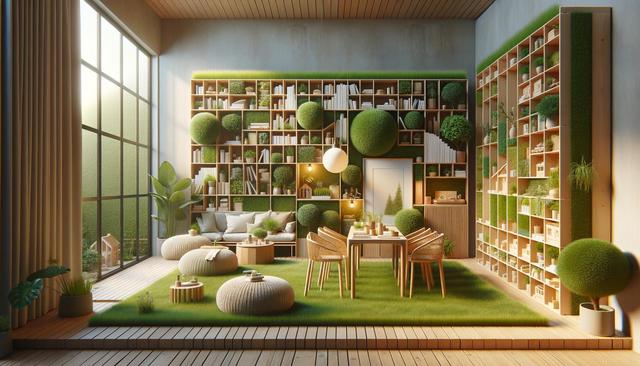Why Artificial Grass is Ideal for Small Residential Spaces
In urban environments and compact neighborhoods, space is often at a premium. Many homeowners and renters are turning to artificial grass as a practical way to add greenery without the upkeep of natural lawns. Artificial turf provides the visual appeal of a lush lawn while eliminating the need for mowing, watering, or fertilizing. This makes it especially attractive for balconies, patios, rooftop terraces, and small courtyards where maintaining natural grass would be difficult or impossible.
Artificial grass is also a viable option for rented properties where permanent landscaping changes are not allowed. Since it can be installed over concrete, tiles, or compacted soil, it offers versatility without the need for invasive work. Its low-maintenance nature makes it an excellent choice for busy households, seniors, or those who want a tidy, green look year-round.
Design Possibilities for Small Spaces
One of the most appealing aspects of artificial grass is its flexibility in design. It can be cut to fit virtually any shape or size, making it suitable for narrow side yards, irregularly shaped patios, or even indoor areas that could benefit from a touch of nature. Homeowners have found creative ways to incorporate turf into their homes, such as:
- Covering balcony floors for a soft, natural feel underfoot
- Framing garden beds or walkways to add contrast and texture
- Creating play areas for children or pets in small backyards
- Installing turf in indoor sunrooms or home gyms
These design ideas not only enhance the visual appeal of the space but also improve its usability. Artificial grass can help soften hard surfaces and define zones in multifunctional areas, making even the smallest outdoor or indoor space feel more organized and inviting.
Durability and Weather Resistance
Unlike natural grass, artificial turf is designed to withstand a range of weather conditions. High-quality synthetic grass is UV-stabilized to prevent fading from sun exposure and is constructed with drainage systems that allow water to pass through quickly, reducing the risk of puddles or mold. This durability makes it an ideal solution for regions with extreme climates, whether hot, cold, wet, or dry.
In small residential settings, where the surface area is limited, these features are particularly advantageous. You don’t have to worry about bare patches developing from high foot traffic or pets. The material retains its appearance and texture over time, making it a long-term investment that requires minimal upkeep. Periodic brushing and occasional rinsing are usually sufficient to keep the area clean and fresh.
Environmental and Cost Considerations
Artificial grass may initially seem like a costly investment, but it often proves economical in the long run. Traditional lawns require ongoing costs for water, fertilizers, pesticides, and lawn care tools. By contrast, synthetic turf eliminates nearly all of these expenses. For small spaces, the cost of installation is typically lower due to the limited area, making it a more accessible option for homeowners on a budget.
From an environmental standpoint, artificial grass conserves water and reduces the need for chemical treatments, which can be beneficial in areas facing water restrictions or where runoff could affect local ecosystems. Some types of artificial grass are also made from recycled materials, adding to their eco-friendly appeal. However, it’s important to choose products that meet safety and environmental standards to ensure minimal impact over time.
Care and Maintenance Tips for Long-Term Use
While artificial grass is low-maintenance, it’s not entirely maintenance-free. To keep your synthetic lawn looking its best, especially in small areas where every detail counts, a few simple practices can go a long way:
- Remove leaves and debris regularly with a leaf blower or broom
- Brush the grass fibers against the grain to keep them upright
- Rinse occasionally with water to remove dust and spills
- Use mild soap and water to clean any pet waste or stains
These tasks are easy to manage and take significantly less time than maintaining a natural lawn. Additionally, if the turf is exposed to heavy use, such as kids playing or pets running around, consider placing mats or rugs in high-traffic zones to extend its life. Proper maintenance helps preserve the color, texture, and overall appearance of the grass, ensuring your small space continues to look vibrant and inviting.
Conclusion: Making the Most of Compact Living
Artificial grass offers a practical, attractive, and adaptable solution for enhancing houses and small residential spaces. Whether you’re working with a balcony, a petite garden, or a rooftop terrace, synthetic turf can transform your area into a green retreat that requires minimal upkeep. Its durability, design flexibility, and environmental benefits make it a smart choice for modern living, especially where space is limited. With thoughtful planning and simple maintenance, artificial grass can bring year-round greenery and comfort to even the smallest corners of your home.


